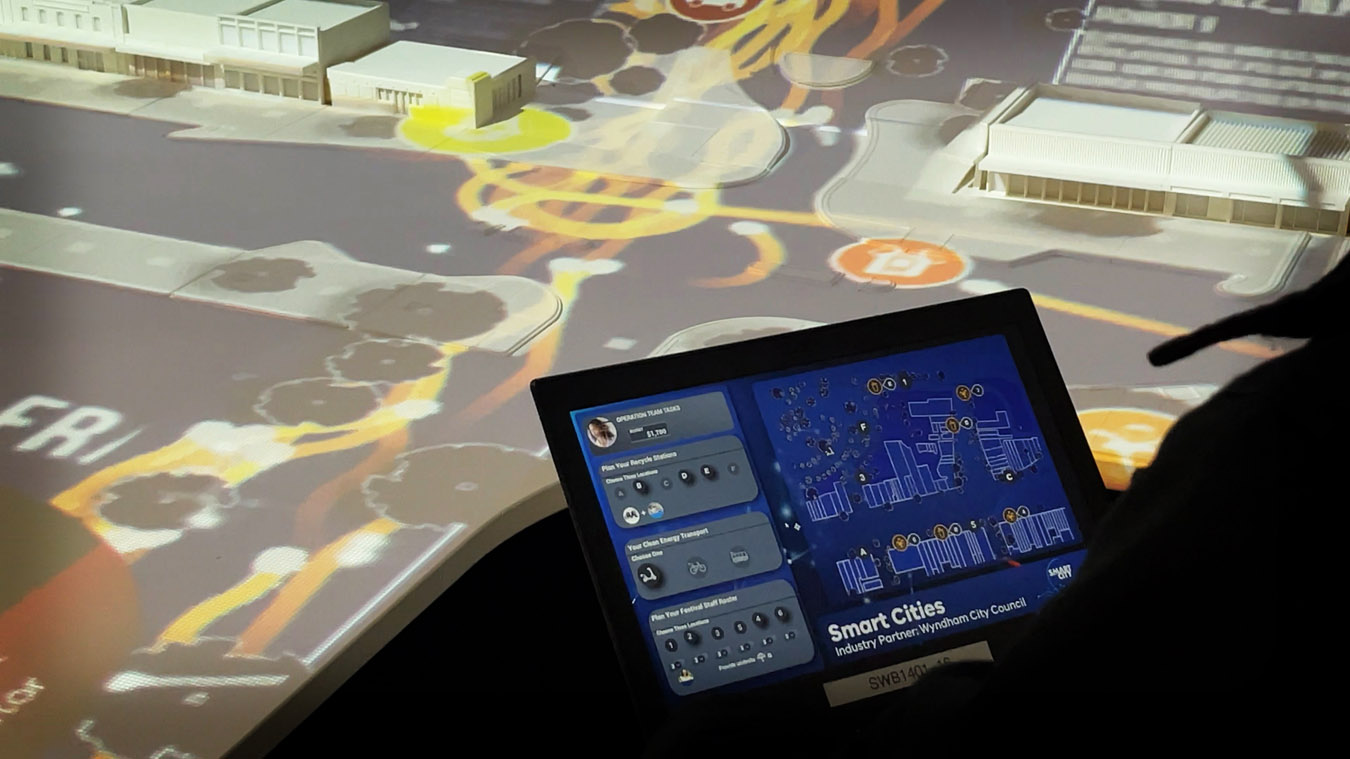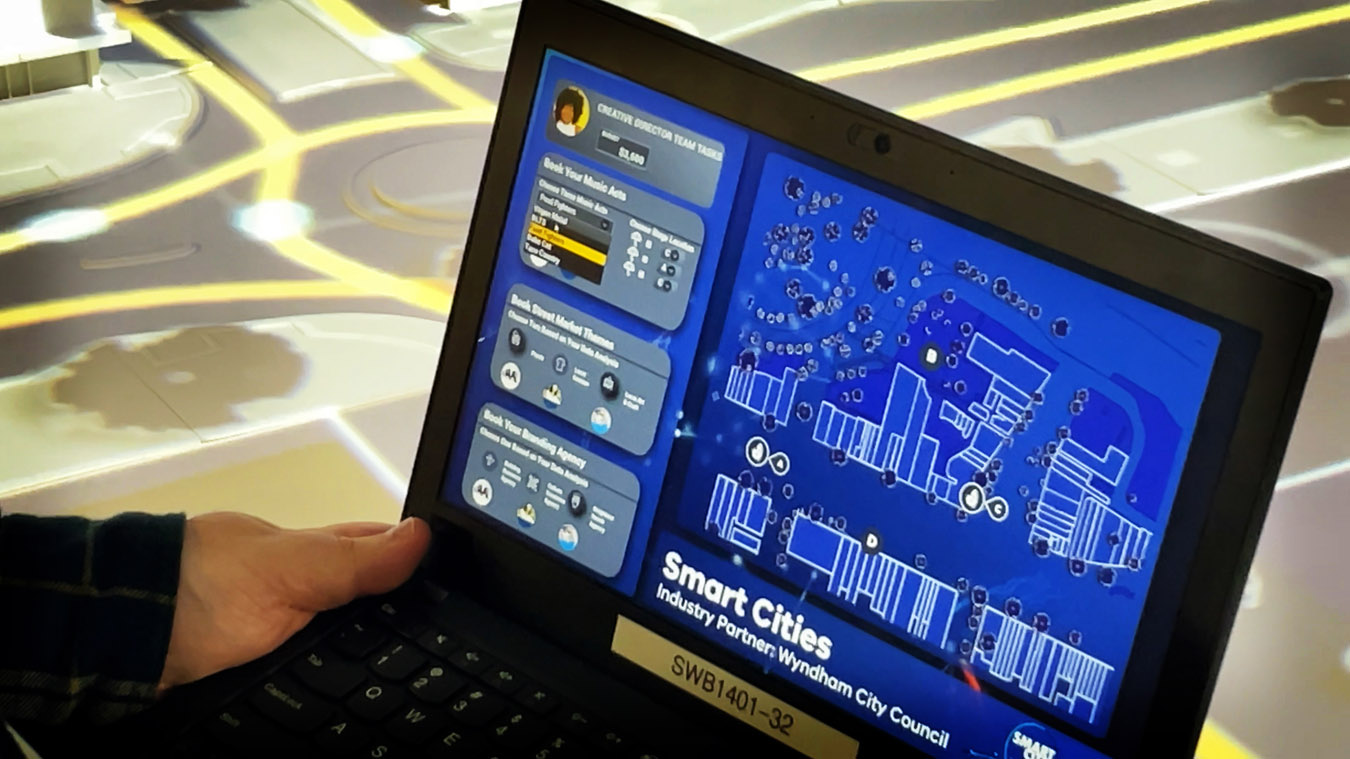Through a series of discovery workshops, we gathered valuable insights from both the Tech School facilitators and the Smart Cities office. These discussions provided a comprehensive understanding of the facilitators’ perspectives, classroom dynamics, and program requirements, as well as the Smart Cities office’s ideas and needs.
Following the initial workshop, we conducted a second round of discussions to refine the project’s direction and subject matter. This iterative process helped shape the project’s design stages as outlined below:
Concept Development: Initial digital artwork design, software development, and prototype creation.
Digital Artwork Development: Continued refinement of digital artwork with stakeholder workshops to ensure alignment.
Spatial Design Phase: Designing the space for optimal student use, determining accessibility, and shaping the projection surface.
Software and Experience Design: Development of software, user experience, and audio-visual elements.
Hardware Profiling: Identifying and selecting the right equipment for a high-quality, permanent installation.
Spatial Audio Composition: Collaborating with a composer to create a tailored Quadraphonic audio score for the experience.
Implementation and Project Management: Overseeing the installation of A/V equipment and coordinating with builders for project execution.
This structured approach ensures a well-rounded and effective design process, addressing all key aspects from the initial concept to the final implementation.









